WALES
Plants and Animals
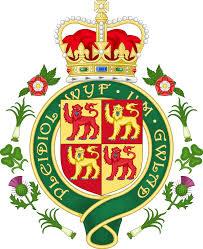
Plants and Animals
Cities in WALES
| Cardiff |
Popular destinations UNITED KINGDOM
| England | Northern ireland | Scotland |
| Wales |
Plants and Animals
Plants
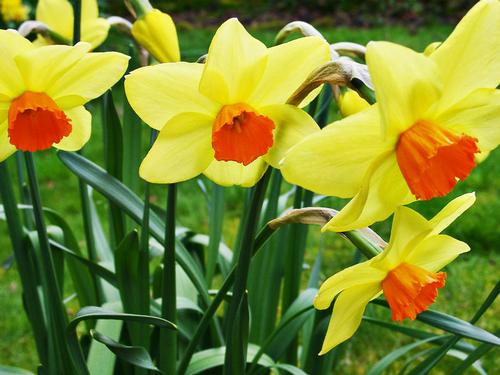 The daffodil is the national flower of WalesPhoto: PatMcD CC 2.5 Generic no chages made
The daffodil is the national flower of WalesPhoto: PatMcD CC 2.5 Generic no chages made
Wales has a very varied flora. Eleven hundred of the sixteen hundred British plant species are also found in Wales.
Wales, together with most of Great Britain, belongs to the Atlantic flora region with characteristic plant species such as ivy, foxglove, wild honeysuckle and heather. Plant species from other flora regions are also found in Wales: in the Brecon Beacons and around Snowdon, species grow from the boreal and alpine flora regions.
These plants were left behind after the last ice age and were able to maintain themselves well afterwards. Examples of these rare plants further in Great Britain are the silver root, the round-leaved saxifrage, the stemless silene and the ball-buttercup. The national plant of Wales is the leek plant and the national flower is the Daffodil.
About 5,000 years ago, Wales was almost completely covered in oak forests, currently Wales forests cover 5% of the area. In dry periods after the last ice age, the treeline in the Brecon Beacons and Snowdonia was 650 meters above sea level. When the climate became warmer and wetter, the tree line fell to 350 meters due to the expansion of the peat.
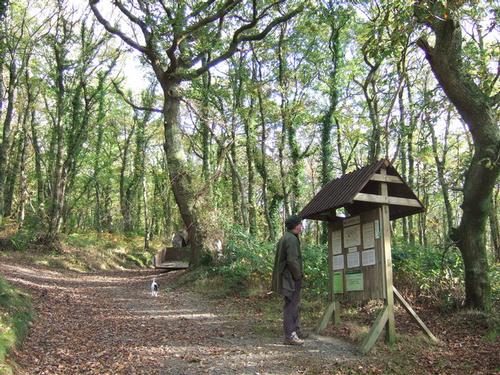 Pengelli Forest WalesPhoto: Ceridwen CC 2.0 Generic no changes made
Pengelli Forest WalesPhoto: Ceridwen CC 2.0 Generic no changes made
Although there are still original forests (including Pengelli Forest in Pembrokeshire), most forests have disappeared due to logging and overgrazing. Deforestation has been going on since prehistoric times, reaching its peak in the 17th and 18th centuries. Depending on the humidity and land use, they have given way to moors, peat bogs and grasslands.
Oak and beech forests grow on the higher soils, alder forests on the wetter and in swamps. In addition to alder, there are also soft birch and willow species in the alder forests. The herb layer also contains species that belong to a humid environment, for example meadowsweet and marsh willow herb.
Wales is now mainly covered with grassland and landscaped forests. For example, since 1919, the Forestry Commission has planted very large conifer plantations for economic and ecological reasons. The national tree of Wales is the Sessile Oak.
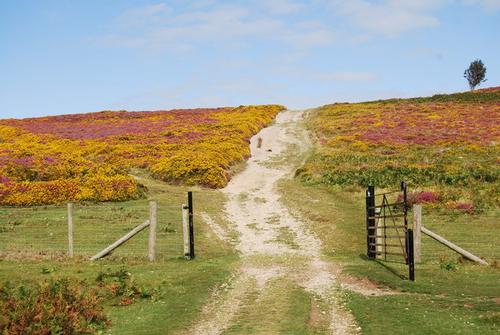 Path through the moors in North WalesPhoto: Nigel Chadwick CC 2.0 Generic no changes made
Path through the moors in North WalesPhoto: Nigel Chadwick CC 2.0 Generic no changes made
In Wales, heather is naturally present on the coast. Inland, grazing is necessary to maintain the heath. Kustheide occurs on top of the cliffs of Pembrokeshire, among others. There are also salt-tolerant species such as sea plantain, the red-stemmed English stonecrop and English grass. In places with a somewhat thicker and more humid soil, red heather and heather grow.
In Wales, bedspreads are found where grease leaf and swamp cartilage leaf can be found in the wet spots. Where groundwater rises above ground level ("swamps"), soot and bulrush grow; where the groundwater is below ground level ("marshes"), alder forests with buttercup and loosestrife occur.
The higher grasslands in the hills and mountains of Wales were created by grazing or mowing. Depending on the type of soil, ostrich, fiori, sheep and red fescue grow here. With too much grazing, the image is determined by inedible plants such as bracken, rough-leaved brush grass, English gorse, thistles and Russians. Lime grasslands are very rich in species, including real primrose, blue anemone, large rockrose, wild thyme, thistle, small burnet, round-headed rapunzel and even various orchid species. The part of the Brecon Beacons National Park with carbon limestone in the soil is home to special plant species such as ley blueberry, lime bedstraw, rosary, small diamond and lily of the valley.
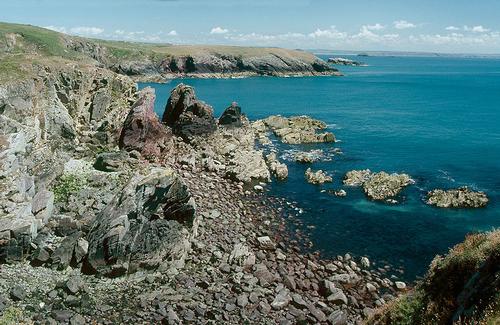 Cliffs Pembrokeshire WalesPhoto: Manfred Heyde CC 3.0 Unported no changes made
Cliffs Pembrokeshire WalesPhoto: Manfred Heyde CC 3.0 Unported no changes made
Several biotopes exist in Pembrokeshire, such as forests, moors, peat bogs, mudflats, salt marshes, cliffs and dunes, each with their own varied vegetation. Inland, snowdrops, celandine and daffodils, the national flower of Wales, bloom early in the year. Later in the year, wild hyacinth, cow parsley, pink cuckoo flower and buttercups will be added. Summer is the heyday of dog rose, sorrel, wild chervil, hogweed and piglets.
Cliffs: English grass, milkweed, heather broom, sea heron beak.
Salt marshes: sea aster, sea lavender, sea fennel.
Dunes: blue sea thistle, thunderwort, sea breeze, tricolor violet, dune rose.
Forests: winter and summer oak, ash, maple, alder, hornbeam, elm, fir, larch, pine, wild cherry; in the shrub layer: elder, holly, hazel, blackberry.
Heather fields and peat bogs: heather, pink heather, red heather, bracken, pipe sprout, brush grass, yellow-flowering leg break, wool grass, peat bog.
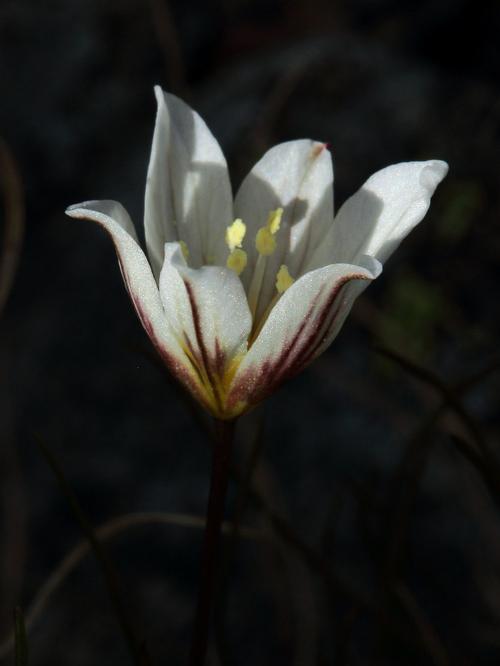 Snowdons Lily, WalesPhoto: Hugh Knott (CC BY-ND 2.0) no changes made
Snowdons Lily, WalesPhoto: Hugh Knott (CC BY-ND 2.0) no changes made
Snowdonia is home to nearly half of all of Britain's plant species, but it is also the Snowdon lily's only growing site. Other wild rock and mountain plants found only at certain elevations and locations include the Tenby Daffodil, the Welsh Poppy, the speckled rock rose, and the rock five-fingered herb.
Grazing sheep have a great influence on the vegetation on the high grasslands. Species that cannot disappear against grazing and inedible plants such as gorse and pitrus appear.
In wet and peaty places, plants such as pink-spotted orchid, marsh deer hay, leg break, fat leaf, round sundew and gale bush bloom. Arctic-alpine species grow on ridges along the steep northern slopes. Natural forests are not much present anymore; isolated trees are Sessile Oak, Rough Elm, Ash, Birch and Rowan.
Animals
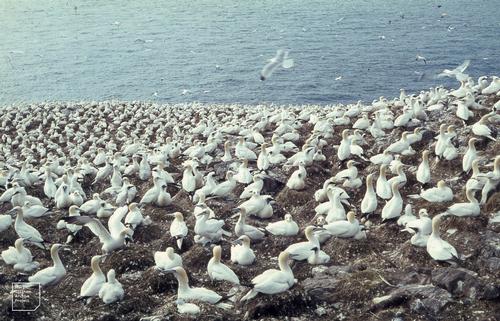 Gannets WalesPhoto: Dr Mary Gilham archive project (CC BY 2.0) no changes made
Gannets WalesPhoto: Dr Mary Gilham archive project (CC BY 2.0) no changes made
Wales is best known for its many and large colonies of waterfowl. For example, the Welsh coastline is home to large colonies of seabirds. One of the largest colonies of gannets in the world, about 30,000 pairs, resides on Grassholm Island.
The rare alpine crow is still found on Ramsey Island, and 30% of Manx shearwaters live on Bardsey Island.
Many species of birds live inland, including the rare red kite with only 150 pairs in Mid Wales. Two other endangered birds, the merlin and the starling, live in the hills. Black ravens, buzzards, sparrowhawks, hawks and peregrine falcons live in the higher mountain regions.
Mammals found in Wales also include species known to us, such as rabbits, hares, squirrels and foxes; otters, badgers and deer are scarcer. Pine marten can be found in the wooded mountains and hills of the northwest, polar cats can be found in Snowdonia and in the coastal dunes, polecats in certain areas of North and Mid Wales. A few herds of feral ponies roam the Snowdonia massif.
A special vole is found on Skomer Island and seals regularly sunbathe on the rocky coasts. There are also many birds on the island, guillemots, northern petrels, puffins, razorbills and gulls.
Skokholm Island is even more rugged than Skomer Island and is home to shearwaters, Northern petrels, razorbills, puffins, falcons and gulls.
On the beaches of "Garlic Island" Ramsey Island, large seal colonies feel completely at home. Furthermore, many rare seabirds, hundreds of thousands of rabbits and colonies of deer and deer live here.
The South Wales coast is known for its clams, a small shellfish. Special is the "gwyniad", a white freshwater fish, which resembles whiting and is not found anywhere else in the world except in Bala Lake. Plaice, cod and tuna are among Wales' main export products.
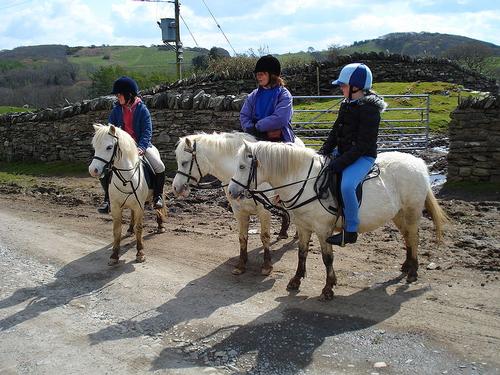 Welsh Pony'sPhoto: Chrisytian Guthier CC 2.0 Unported no changes
Welsh Pony'sPhoto: Chrisytian Guthier CC 2.0 Unported no changes
Wales also has its own pony, the Welsh pony, cattle, the Welsh Black and dog breed, the corgi. Welsh ponies can be divided into four categories: A = Welsh Mountain pony (maximum height at the withers 122 cm); B = Welsh pony (137); C = Welsh pony cob type (137 but with firmer legs); D + E = Welsh cob (137-155).
The Brecon Beacons National Park has a wide variety of birds due to the variety of biotopes:
Highlands: raven, buzzard, kestrel, glacier, Scottish snow grouse, merlin, wheatear
Lowland: Red Kite, Buzzard, Sparrowhawk, Peregrine Falcon, Whistler, Collared Redstart, Pied Flycatcher, Chiffchaff, Tree Creeper, Nuthatch
Hedges: magpie, rook, carrion crow, jackdaw, bullfinch, greenfinch, goldfinch, yellowhammer
Llangorse lake: grebe, coot, great blue heron, reed warbler, mallard, teal, wigeon, pochard
Streams and streams: Common starling, great yellow wagtail, kingfisher
Mammals: fox, badger, otter, weasel, hare, rabbit, red squirrel, gray squirrel, small rodents, bats
Miscellaneous: viper, lizards, slow worm, dragonflies
Pembrokeshire is at a crossroads of animal distribution areas from different climatic regions:
Seabirds: auk, guillemot, puffin, kittiwake, cormorant, crested cormorant, oystercatcher, herring gull, black-backed gull, Northern (arrow) petrel, gannet, rock pigeon
Inland: Curlew, Teal, Teal, Wigeon, Merganser, Alpine Crow
Agricultural areas: buzzard, kestrel, peregrine falcon, magpie, great blue heron, tawny owl, great spotted woodpecker, jay, pheasant, mute swan, wood pigeon, barn owl, hoopoe, red kite
Forests and hedges: black-headed, chiffchaff, black redstart
Streams and streams: Common starling, great yellow wagtail, kingfisher
Mammals: badger, fox, otter, arctic cat, mink, rabbit, hare, gray squirrel, deer
Coastal mammals: porpoise, dolphin, gray seal
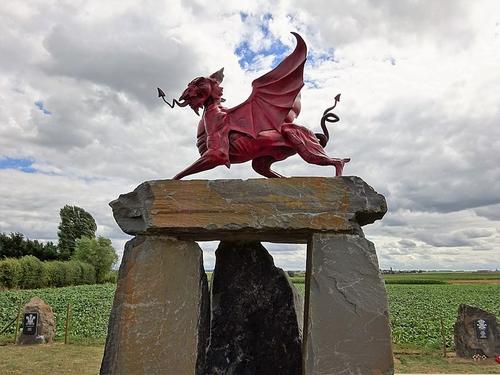 Welsh DragonPhoto: Llywelyn2000 CC 4.0 International no changes made
Welsh DragonPhoto: Llywelyn2000 CC 4.0 International no changes made
The Welsh national animal is a mythical animal: A Red Dragon
Sources
Beeftink, A. / Zuid-Engeland en Wales
Van Reemst
Berkien, G. / Wales
Kosmos-Z&K
Berkien, G. / Wales
Kosmos-Z&K
Danse, W. / Midden-Engeland en Wales
ANWB
Fröhlich, D. / Wales
Deltas
Hendriksen, B. / Wales
Van Reemst
Hestler, A. / Wales
Marshall Cavendish
King, J. / Wales
Lonely Planet
Westphal, U. / Wales
Van Reemst
CIA - World Factbook
BBC - Country Profiles
Last updated December 2025Copyright: Team The World of Info